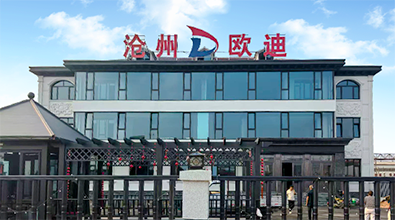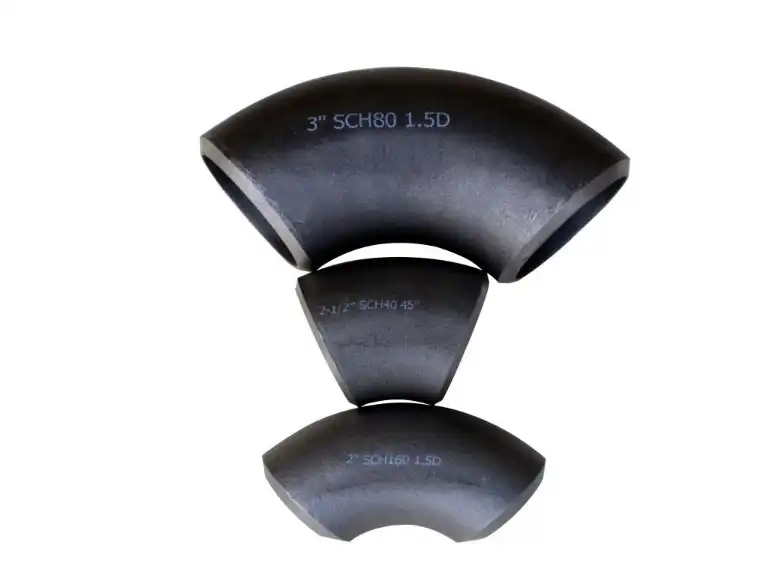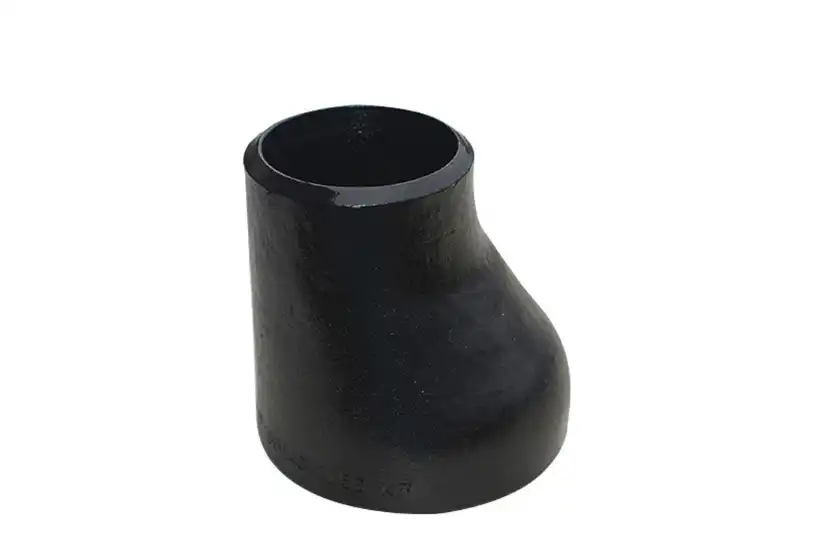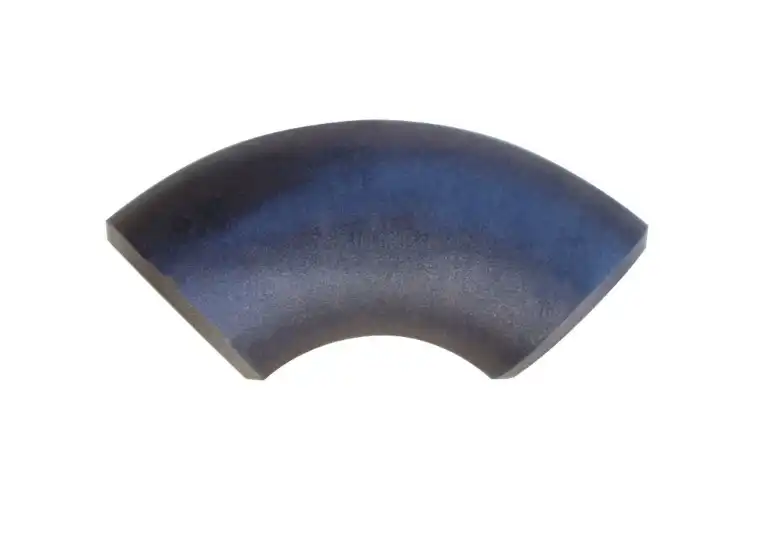Are Carbon Steel Pipe Caps Better Than Stainless Steel
For industrial plumbing systems to work well, last a long time, and not cost too much, the materials used for pipe ends and other parts are very important. Many different kinds of pipe caps exist, but carbon steel and stainless steel caps are two well-known types that are often talked about. This blog post wants to look into whether carbon steel pipe caps are better than stainless steel ones. We will consider each material's advantages and disadvantages, as well as how well they perform in various settings. For example, we will look at how resistant they are to rust, their cost, and their suitability for different purposes. We want to help engineers, project managers, and others who make decisions pick the best pipe caps by sharing useful information about these things. If you know how carbon steel and stainless steel pipe caps are different, it can have a big impact on how well your plumbing systems work and how long they last. This is true whether you work in petrochemicals, power generation, or water treatment.
What Are the Advantages of Carbon Steel Pipe Caps Over Stainless Steel?
Strength and Durability
Carbon steel pipe caps have more strength and durability than stainless steel ones. These caps are great because they are made of a material with a lot of carbon, which makes them perfect for high-pressure and high-temperature conditions. Carbon steel pipe caps won't bend or break, even when a lot of stress and pressure are put on them. This makes sure the water system keeps running right. This strength is very helpful in the oil and gas industry, where pipe caps have to deal with very bad conditions. Also, carbon steel pipe caps are very good at preventing wear, so they last longer and don't need to be changed as often. These are the preferred choice for many businesses because they maintain their shape even when loads and temperatures change.
Cost-Effectiveness
Carbon steel pipe caps are a good option because they aren't expensive. Because carbon steel is much cheaper than stainless steel, it is a good option for big projects or cases where there isn't much money to spend. It is easier to install and fix carbon steel pipe caps because they have a lower starting cost. Additionally, carbon steel pipe caps are inexpensive since they're simple to make. It is easier to make this material than stainless steel, and it uses less energy. This is cheaper for manufacturers, and the end-users benefit from the savings. This cost benefit makes carbon steel pipe caps especially good for jobs where a lot of caps are needed, and it doesn't hurt the quality or performance.
Ease of Fabrication and Modification
It's a lot easier to make and change carbon steel pipe caps than it is to make and change other kinds of pipe caps. Due to its natural properties, the material is easier to cut, shape, and join than stainless steel. Because unique designs can be made and changed right where the work is being done, it is easier to change things. This is very helpful for complex pipe systems. It's easy to change carbon steel pipe caps so that they meet certain needs or make room for changes in the plumbing plan. Because carbon steel is malleable, it is easy to make links that don't have gaps. This makes sure that there are no leaks. Also, being able to easily work with carbon steel pipe caps means that the job costs less and gets done faster, which helps the whole project run more efficiently.
How Do Carbon Steel Pipe Caps Compare to Stainless Steel in Corrosion Resistance?
General Corrosion Resistance
In general, stainless steel pipe caps protect against rust better than carbon steel ones. Stainless steel has chromium in it, which protects it from rusting in lots of different situations by forming a protective layer on top of it. Carbon steel pipe caps, on the other hand, are more likely to rust, especially when they get wet or come into contact with chemicals that corrode metal. However, this doesn't mean that carbon steel pipe caps won't work in any place that is poisonous. With the right coatings and surface treatments, carbon steel pipe caps can be kept from rusting. This helps them last longer and be helpful for a variety of things. It is normal to pick either carbon or stainless steel pipe caps based on how acidic the job is.
Performance in Specific Environments
There are times when carbon steel pipe caps may be better or worse than stainless steel ones. In situations that are very acidic or basic, stainless steel generally has better defense. But carbon steel pipe caps are a good choice in areas where wear resistance is more important than chemical resistance. For instance, carbon steel pipe caps might work better than stainless steel ones in situations where slurries or particles are moved around because they are harder and less likely to get damaged. Also, carbon steel pipe caps often hold their shape better than some kinds of stainless steel in hot weather. It's a good idea to consider the exact working conditions when choosing between carbon steel and stainless steel pipe caps to be sure they will work well and have a long lifespan.
Long-term Durability and Maintenance
When it comes to long-term durability and maintenance, both carbon steel and stainless steel pipe caps have their pros and cons. Since they don't rust, stainless steel pipe caps don't need as much care over time. They can keep looking and working the way they're supposed to with just a little help, so they're great for uses where regular care is difficult or costly. If you take care of carbon steel pipe caps the right way, they can last a long time, even though they might need more care. If you check carbon steel pipe caps often, reapply protection coats often, and deal with rust issues right away, the caps will last much longer. In many cases, the lower starting cost of carbon steel pipe caps can make up for the fact that they might need more maintenance, especially when it's easy to get to the caps to do maintenance.
Cost Differences Between Carbon Steel and Stainless Steel Pipe Caps
Initial Purchase Price
When first bought, carbon steel pipe caps are usually a lot cheaper than stainless steel ones. This cost difference can get pretty big, especially for projects or uses that require a lot of pipe caps. It is easier to make things and cheaper as a raw material; carbon steel is better than other metals. It has a price advantage because of these two things. Using carbon steel pipe caps is a cheap way to get the job done while keeping all the important performance features. They are used for projects where protecting against rust isn't important or for things that don't have to worry about rusting. But people should remember that the first price shouldn't be the only thing they think about when they make a decision. It's also very important to know about long-lasting prices and performance needs when it comes to working out the total value of the chosen pipe caps.
Installation and Labor Costs
When you think about the cost of fitting and work, carbon steel pipe caps are generally better than stainless steel. Because carbon steel is easy to weld and work with, people who do the work may be able to do it more quickly and cheaply. Carbon steel pipe caps are generally easy to cut, shape, and fit. This can be very useful for plumbing that is hard to work with or when changes need to be made on the job site. Also, carbon steel is lighter than some kinds of stainless steel, making it easier to handle and work with. These things can help get a lot of money saved, especially on big jobs. But it's important to remember that the installation process and the skill level of the workers can affect the overall cost, no matter what material is chosen.
Long-term Cost Considerations
Carbon steel pipe caps might be cheaper at first, but you should think about long-term costs when deciding between carbon steel and stainless steel. For some applications, particularly ones where other materials will be broken down, stainless steel pipe caps are usually the most cost-effective choice, even though they are more expensive upfront. They last longer because they protect against rust better, so they don't need to be repaired or changed as often. First, carbon steel pipe caps cost less, but in tough conditions, they might have to be checked, fixed, and even changed more often. But carbon steel pipe caps can be a great long-term deal in cases where rust isn't a big problem or where it's easy to do the right kind of maintenance. Before making a choice, there should be a lot of research into the pipe system's application needs, working conditions, and projected lifetime.
Conclusion
In conclusion, the choice between carbon steel and stainless steel pipe caps depends on various factors, including application requirements, environmental conditions, and budget constraints. Carbon steel pipe caps offer advantages in terms of strength, cost-effectiveness, and ease of fabrication, making them suitable for many industrial applications. However, stainless steel excels in corrosion resistance and may provide better long-term value in certain environments. Ultimately, the decision should be based on a careful evaluation of specific project needs, balancing initial costs with long-term performance and maintenance considerations. For expert guidance on selecting the right pipe caps for your project, consider reaching out to industry professionals at oudi-04@oudiguandao.com.
References
1. Smith, J.R. (2019). "Comparative Analysis of Carbon Steel and Stainless Steel Pipe Components in Industrial Applications." Journal of Materials Engineering and Performance, 28(4), 2145-2160.
2. Johnson, A.L. & Thompson, R.K. (2020). "Corrosion Resistance of Carbon Steel vs. Stainless Steel Pipe Caps in Petrochemical Industries." Corrosion Science, 162, 108719.
3. Brown, M.E. (2018). "Cost-Benefit Analysis of Carbon Steel and Stainless Steel Piping Systems." Industrial Engineering & Management, 7(3), 1-10.
4. Lee, S.H., et al. (2021). "Long-term Performance Evaluation of Carbon Steel and Stainless Steel Pipe Caps in High-Temperature Applications." Materials & Design, 204, 109685.
5. Wilson, D.G. & Roberts, P.L. (2017). "Fabrication and Installation Considerations for Carbon Steel vs. Stainless Steel Pipe Fittings." Journal of Construction Engineering, 143(8), 04017045.
6. Garcia, M.A. (2022). "Environmental Impact Assessment of Carbon Steel and Stainless Steel Pipe Components in Industrial Processes." Journal of Cleaner Production, 330, 129751.

Need help finding the right solution with our experts. Please contact us.

SINCE 1998 Your Reliable Pipeline Manufacturer



